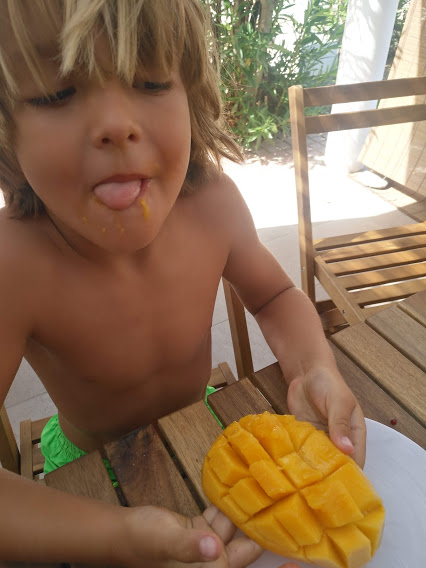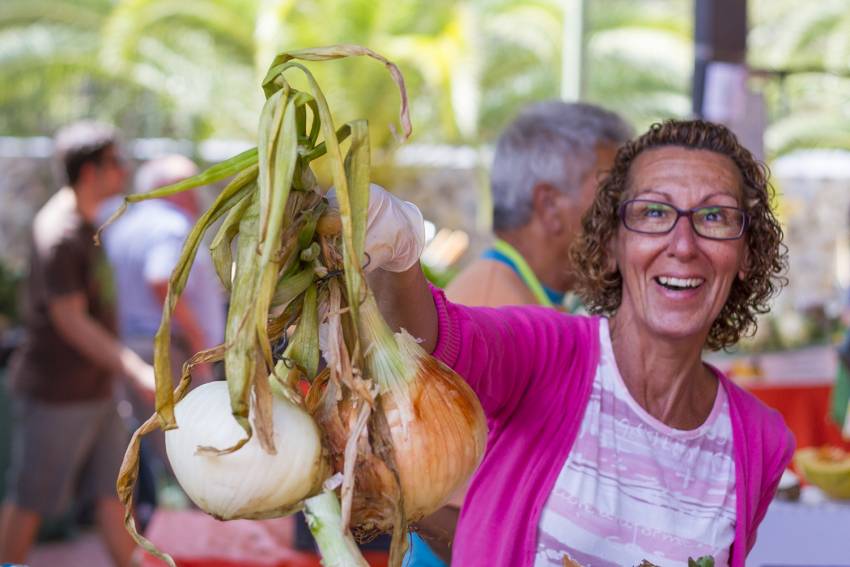First Mango Spotted In Gran Canaria
The Gran Canaria mango season runs from summer through to February depending on the year. The first ones normally appear in the shops in July but this year they are really early.
This year Spar supermarkets are already selling little ones at an outrageous 10 euros per kilo. However, prices should fall fast as the main crop starts to ripen in the warmest spots in south Gran Canaria.
How to choose a good mango in Gran Canaria
Mangos grow all over Gran Canaria but the best ones come from the south and south west valleys like Arguineguín, Mogán and  Veneguera. Really fresh ones have a faint white bloom on the skin, like a fine layer of chalk dust.
Veneguera. Really fresh ones have a faint white bloom on the skin, like a fine layer of chalk dust.
If you find a mango that smells great, it will taste just as good no matter what it looks like.The tiny yellow ones, often with sticky skin, are fibrous inside but taste delicious. Larger yellow or green ones have no fibres and you can smell them as soon as you walk into the shop.
Some varieties, like the big red ones, are delicious but don't have any odour at all. Choose one that is slightly soft to the touch but doesn't have black spots or by the stem (which indicate that it has started to rot before it ripens).
It's often best to buy local fruit in Gran Canaria from small shops and fruterias rather than the big supermarkets. The supply chain is shorter and the fruit less likely to be picked early and kept in cold storage.
The San Lorenzo Farmer's Market
The weekend markets at Santa Brigida and San Mateo are so popular these days that there's traffic jams on the road up. Fortunatley there's a Sunday alternative close to Las Palmas that doesn't get the crowds.
San Lozenzo market has about 20 stalls and is a genuine farmer's market with all produce grown locally. It even has a price board at the entrance listing the maximum and minimum prices for the fruit and veg on sale.
One highlight of the San Lorenzo market is the cheese stall right at the entrance. All the cheeses on display are made in the surrounding area and tasting is encouraged. They even cut your cheese with a traditional Canarian knife. Their lightly smoked goat cheese is fantastic and the stall next door does a great flor cheese suitable for veggies.
As well as fresh produce San Lorenzo also has stall selling bread and local cakes as well as aloe vera products, Gran Canarian olive oil and local honey. There's a small cafe in the market square and another in the church square a couple of minutes walk away: It's only got six tables so be prepared to wait for a seat.
Get to San Lorenzo from Las Palmas by car (there is parking right next to the market), taxi or on bus 335. The market runs from 0.900 to 15.00 but quite a few stall sell out well before the end.
Gran Canaria Info recommends:
- Default
- Title
- Date
- Random














